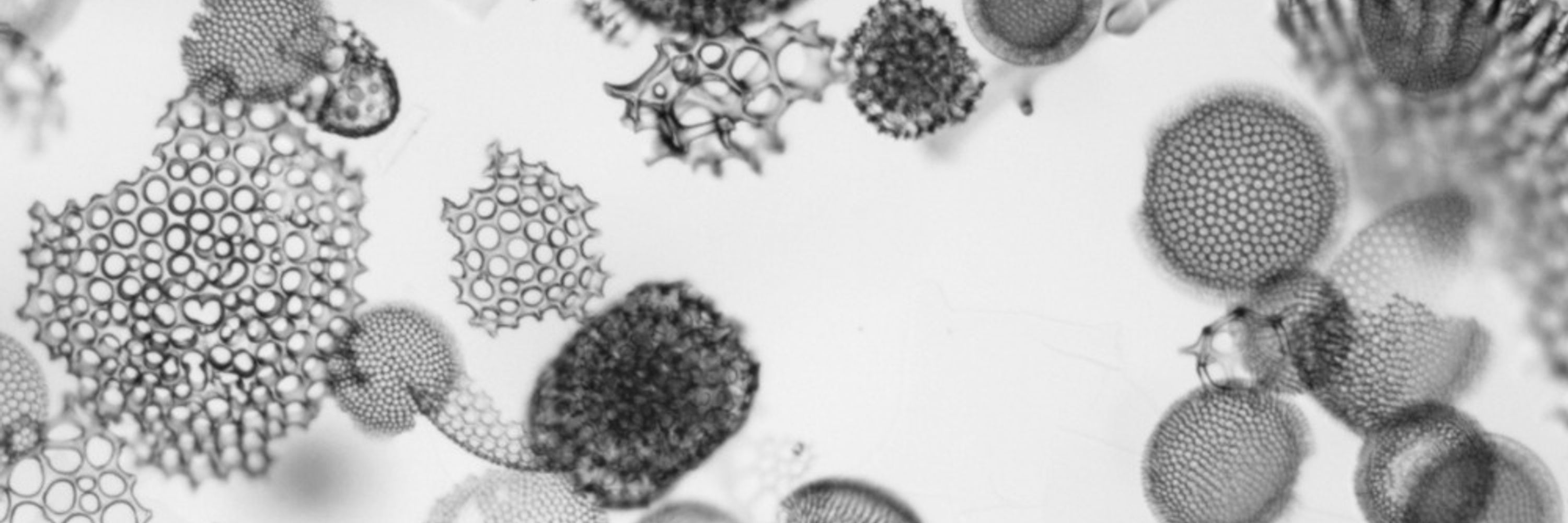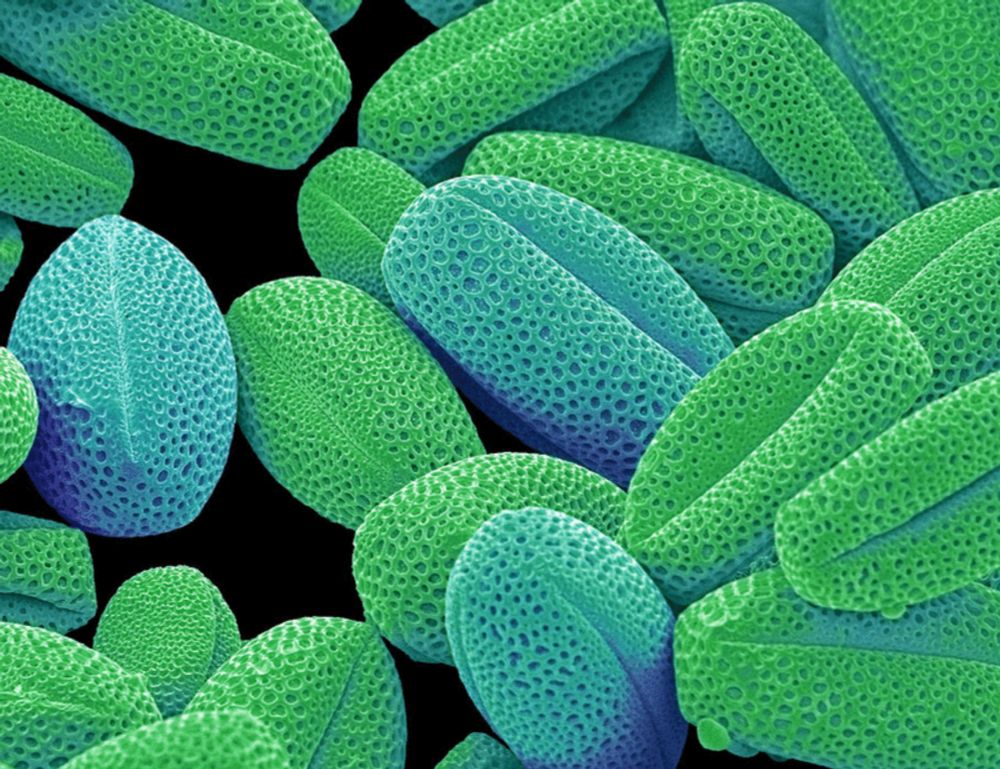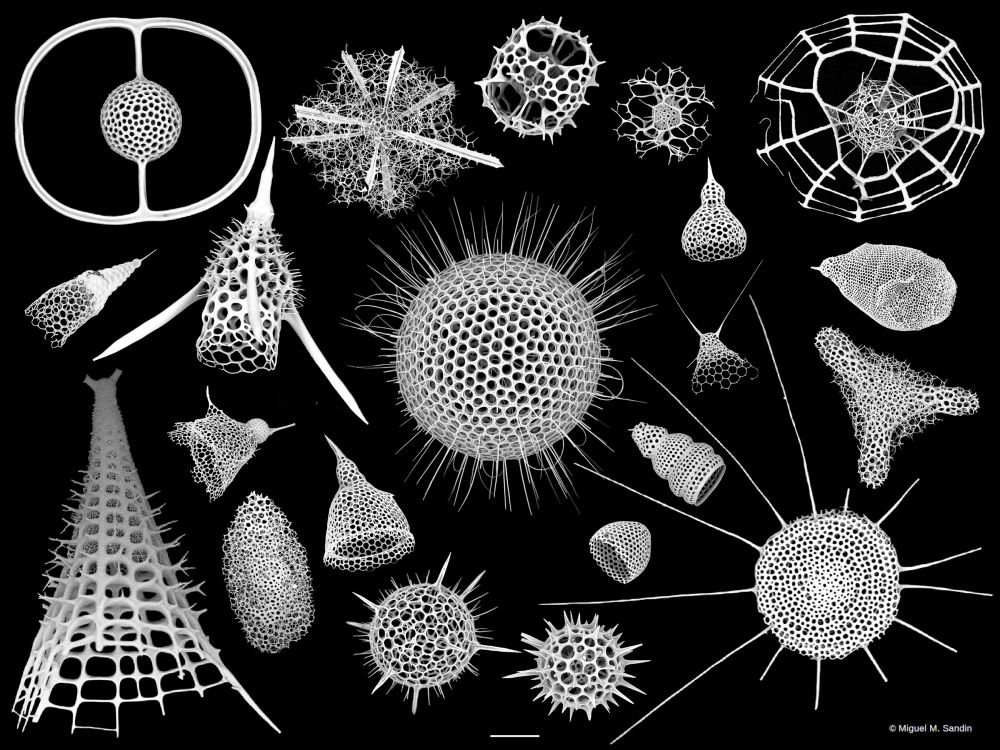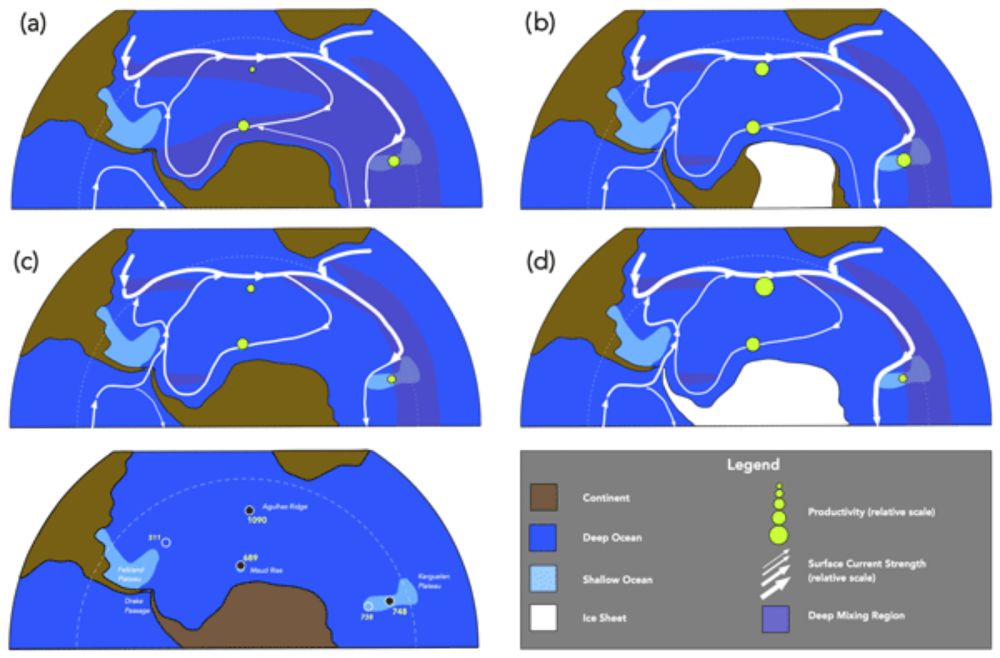
Johan Renaudie
@plannapus.bsky.social
Micropaleontologist.
#Radiolaria
🔬🌊🦠
#Radiolaria
🔬🌊🦠
Reposted by Johan Renaudie
Fossils for Future: the billion-dollar case for paleontology’s digital infrastructure
DOI: doi.org/10.32942/X2D...
DOI: doi.org/10.32942/X2D...

September 13, 2025 at 3:30 AM
Fossils for Future: the billion-dollar case for paleontology’s digital infrastructure
DOI: doi.org/10.32942/X2D...
DOI: doi.org/10.32942/X2D...
Reposted by Johan Renaudie
BioDeeptime has made it into Science! "Climate is changing fast—and forests are 200 years behind". A sweeping new analysis of ancient pollen and modern data reveals this dramatic lag—and its consequences."(from ScienceDaily) - article: DOI: 10.1126/science.adr6700 CONGRATULATIONS to the authors.

July 7, 2025 at 10:11 AM
BioDeeptime has made it into Science! "Climate is changing fast—and forests are 200 years behind". A sweeping new analysis of ancient pollen and modern data reveals this dramatic lag—and its consequences."(from ScienceDaily) - article: DOI: 10.1126/science.adr6700 CONGRATULATIONS to the authors.
Reposted by Johan Renaudie
Vegetation might not be able to keep up with current rates of environmental change, given data from the pollen fossil record. Fun doing this work with David Fastovich in the lead, but sobering www.science.org/doi/10.1126/...

Coupled, decoupled, and abrupt responses of vegetation to climate across timescales
Climate and ecosystem dynamics vary across timescales, but research into climate-driven vegetation dynamics usually focuses on singular timescales. We developed a spectral analysis–based approach that...
www.science.org
July 6, 2025 at 3:36 PM
Vegetation might not be able to keep up with current rates of environmental change, given data from the pollen fossil record. Fun doing this work with David Fastovich in the lead, but sobering www.science.org/doi/10.1126/...
Reposted by Johan Renaudie
Check out our latest #IODP #Exp379 contribution about the #Antarctic Ice Sheet's history @natcomms.nature.com. Read the full article here: rdcu.be/euikE

West Antarctic ice retreat and paleoceanography in the Amundsen Sea in the warm early Pliocene
Nature Communications - A geological climate archive documents the effects of ocean warming on Antarctic marine ice-sheets. Large sediment fluxes from the interior of West Antarctica precede the...
rdcu.be
July 1, 2025 at 1:28 PM
Check out our latest #IODP #Exp379 contribution about the #Antarctic Ice Sheet's history @natcomms.nature.com. Read the full article here: rdcu.be/euikE
Is it just for me or are all the IODP Proceedings currently unreachable? I'm getting Error 403 on all of them and the individual DOIs lead to Error: DOI not found.
June 30, 2025 at 10:45 AM
Is it just for me or are all the IODP Proceedings currently unreachable? I'm getting Error 403 on all of them and the individual DOIs lead to Error: DOI not found.
Now published online in Current Biology! www.cell.com/current-biol...
May 7, 2025 at 7:17 AM
Now published online in Current Biology! www.cell.com/current-biol...
And it is finally out! bg.copernicus.org/articles/22/...
April 22, 2025 at 6:53 AM
And it is finally out! bg.copernicus.org/articles/22/...
Reposted by Johan Renaudie
A bunch of cells of the nasselarian radiolarian Plagiacantha arachnoides--like a group of little spiders! Plus a couple of bonus acantharians. From the gulf of maine #protistaday #protistsonsky #marinelife

November 24, 2024 at 12:47 AM
A bunch of cells of the nasselarian radiolarian Plagiacantha arachnoides--like a group of little spiders! Plus a couple of bonus acantharians. From the gulf of maine #protistaday #protistsonsky #marinelife
Reposted by Johan Renaudie
Second paper in Ecology & Evolution out in two consecutive days! 🐢🤩🐢
"Functional and character disparity are decoupled in turtle mandibles", w team fr MfN Berlin (incl. @plannapus.bsky.social)
I guess the German chancellor would call this a "Doppel-Wumms" 😜
onlinelibrary.wiley.com/doi/10.1002/...
"Functional and character disparity are decoupled in turtle mandibles", w team fr MfN Berlin (incl. @plannapus.bsky.social)
I guess the German chancellor would call this a "Doppel-Wumms" 😜
onlinelibrary.wiley.com/doi/10.1002/...

Functional and Character Disparity Are Decoupled in Turtle Mandibles
Here, we compare functional disparity measured by biomechanical proxies and character disparity measured by discrete morphological characters in turtle jaws. Exploration of mandibular patterns reveal...
onlinelibrary.wiley.com
November 14, 2024 at 8:44 AM
Second paper in Ecology & Evolution out in two consecutive days! 🐢🤩🐢
"Functional and character disparity are decoupled in turtle mandibles", w team fr MfN Berlin (incl. @plannapus.bsky.social)
I guess the German chancellor would call this a "Doppel-Wumms" 😜
onlinelibrary.wiley.com/doi/10.1002/...
"Functional and character disparity are decoupled in turtle mandibles", w team fr MfN Berlin (incl. @plannapus.bsky.social)
I guess the German chancellor would call this a "Doppel-Wumms" 😜
onlinelibrary.wiley.com/doi/10.1002/...
Reposted by Johan Renaudie
"The death of an acantharian" Or: why we don't have fossil acantharian skeletons like we do for their glassy and chalky cousins. I think in this case it might somehow be an active process--acantharian skeletons from cells that swarm away last longer.
November 11, 2024 at 11:44 AM
"The death of an acantharian" Or: why we don't have fossil acantharian skeletons like we do for their glassy and chalky cousins. I think in this case it might somehow be an active process--acantharian skeletons from cells that swarm away last longer.
Sarah, Dave and I just got a small piece published in PAGES Magazine on the legacy of IODP in term of evolutionary studies and conservation biology (with radiolarians as case study): doi.org/10.22498/pag...
Radiolaria as a study system for marine plankton in a changing climate | PAGES
doi.org
October 30, 2024 at 7:34 PM
Sarah, Dave and I just got a small piece published in PAGES Magazine on the legacy of IODP in term of evolutionary studies and conservation biology (with radiolarians as case study): doi.org/10.22498/pag...
Happy to have collaborated on this with Miguel! A new time-calibrated molecular phylogeny of radiolarians with insights on their hidden diversity 🧪
Radiolaria are known for their elaborate and gorgeous skeletons, found all over our oceans. But what if I tell you that half of their diversity might be naked!?
www.biorxiv.org/content/10.1...
www.biorxiv.org/content/10.1...

October 9, 2024 at 2:55 PM
Happy to have collaborated on this with Miguel! A new time-calibrated molecular phylogeny of radiolarians with insights on their hidden diversity 🧪
Reposted by Johan Renaudie
Radiolaria are known for their elaborate and gorgeous skeletons, found all over our oceans. But what if I tell you that half of their diversity might be naked!?
www.biorxiv.org/content/10.1...
www.biorxiv.org/content/10.1...

October 9, 2024 at 1:56 PM
Radiolaria are known for their elaborate and gorgeous skeletons, found all over our oceans. But what if I tell you that half of their diversity might be naked!?
www.biorxiv.org/content/10.1...
www.biorxiv.org/content/10.1...
New article from our student Gabrielle, on Late Eocene paleoproductivity in the Southern Ocean! 🧪
cp.copernicus.org/articles/20/...
cp.copernicus.org/articles/20/...

Late Eocene to early Oligocene productivity events in the proto-Southern Ocean and correlation to climate change
Abstract. The Eocene–Oligocene transition (EOT, ca. 40–33 Ma) marks a transformation from a largely ice-free to an icehouse climate mode that is well recorded by oxygen-stable isotopes and sea surface...
cp.copernicus.org
June 14, 2024 at 9:37 AM
New article from our student Gabrielle, on Late Eocene paleoproductivity in the Southern Ocean! 🧪
cp.copernicus.org/articles/20/...
cp.copernicus.org/articles/20/...
Our latest study using the Neptune database is out as a preprint. Long story short: we tried to replicate past estimates of global sedimentation rates during the Cenozoic and noticed biases that went previously ignored and tried to correct them.
egusphere.copernicus.org/preprints/20...
egusphere.copernicus.org/preprints/20...

Cenozoic pelagic accumulation rates and biased sampling of the deep sea record
Abstract. Global weathering is a primary control of the earth's climate over geologic time scales: converting atmospheric pCO2 into dissolved bicarbonate; with carbon sequestration by marine plankton ...
egusphere.copernicus.org
January 3, 2024 at 8:18 PM
Our latest study using the Neptune database is out as a preprint. Long story short: we tried to replicate past estimates of global sedimentation rates during the Cenozoic and noticed biases that went previously ignored and tried to correct them.
egusphere.copernicus.org/preprints/20...
egusphere.copernicus.org/preprints/20...
Reposted by Johan Renaudie
The first finely resolved CO2-curve for the last 66 million years. Almost identical to the temperature curve. Little room for other drivers than greenhouse gasses to control Earth's climate.
www.science.org/doi/10.1126/...
www.science.org/doi/10.1126/...
December 8, 2023 at 10:32 AM
The first finely resolved CO2-curve for the last 66 million years. Almost identical to the temperature curve. Little room for other drivers than greenhouse gasses to control Earth's climate.
www.science.org/doi/10.1126/...
www.science.org/doi/10.1126/...
A message to the Neptune database users: the website and the database server are not currently accessible. An alternate access is available though as (versioned) backups of the database are now available on Zenodo (doi.org/10.5281/zeno...). (1/4)
Archive of Neptune (NSB) database backups
This is the state of the Neptune (NSB) database (http://nsb.mfn-berlin.de) as of 2023-06-05 archived by Johan Renaudie..The database is given as a native PostgreSQL backup (nsb_postgresql.zip) and is ...
doi.org
November 22, 2023 at 1:55 PM
A message to the Neptune database users: the website and the database server are not currently accessible. An alternate access is available though as (versioned) backups of the database are now available on Zenodo (doi.org/10.5281/zeno...). (1/4)

